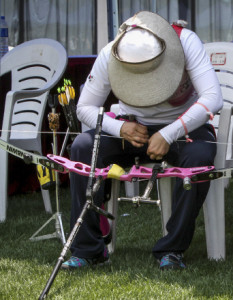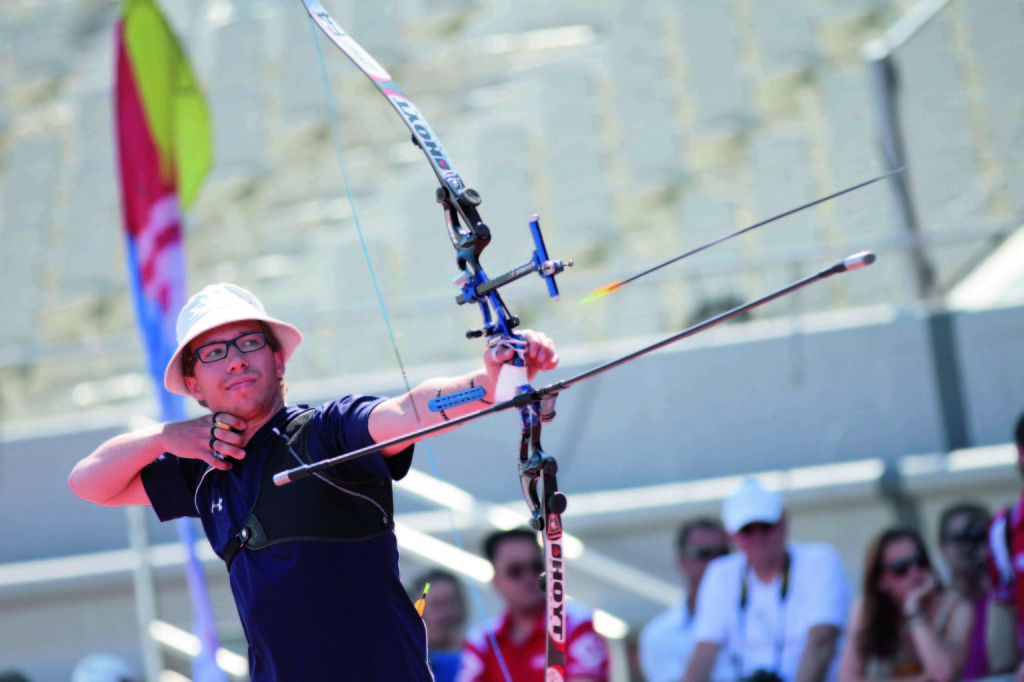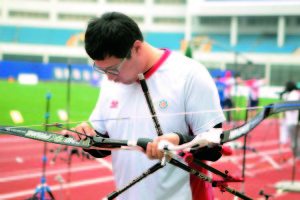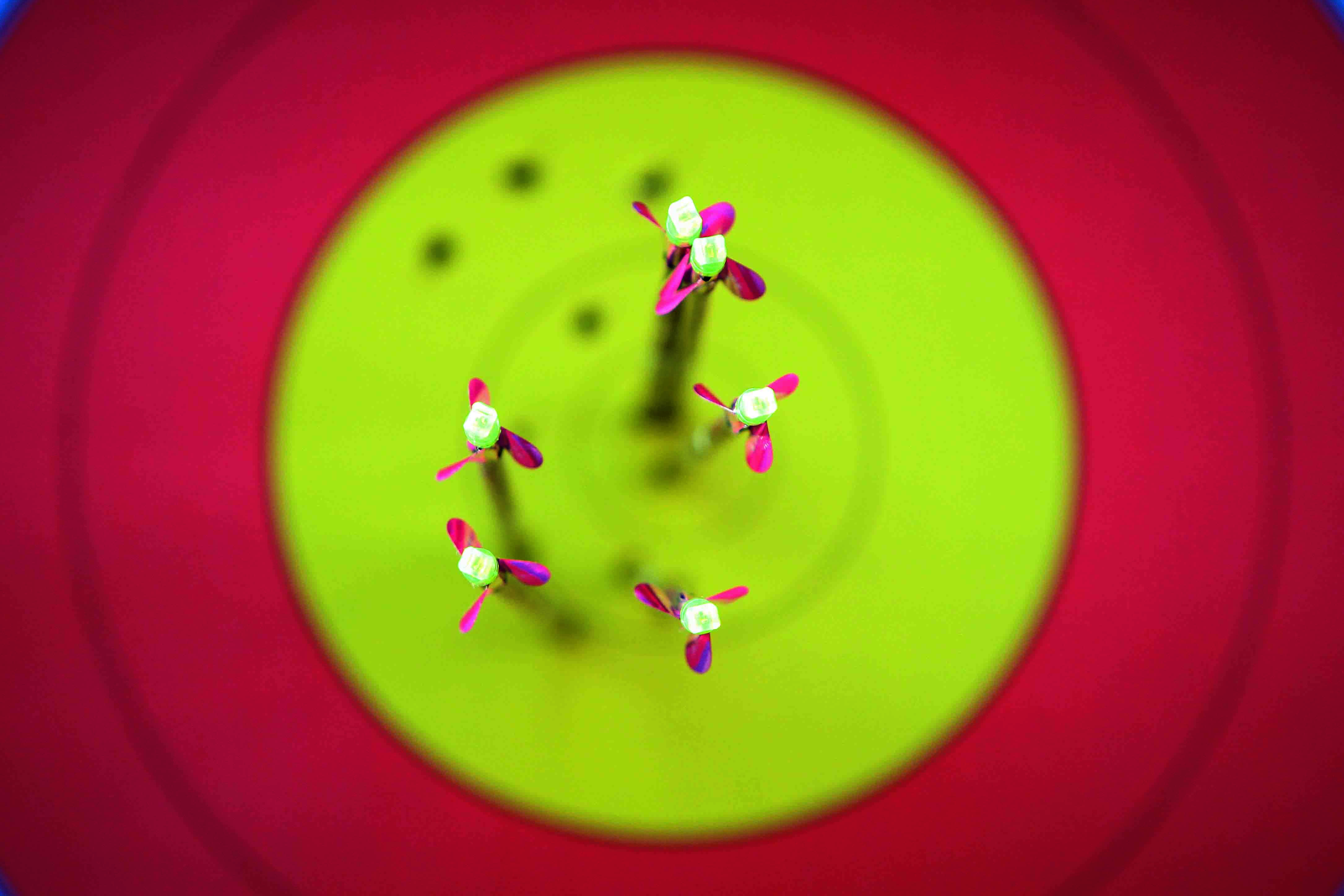A question I often hear in seminars (and one I frequently observe on the shooting line) is “Why is my recurve so noisy on release?” The answer lies in the set up and tuning processes, which are critical not only in achieving a quiet and responsive bow, but for repetitive accuracy. So I’m going to examine, from start to finish, the requirements to set up and tune (and finally super-tune) your recurve to arrive at a point where it is functioning at its supreme potential.
The first consideration is the initial bow choice. This is not the ‘brand’ you choose, because many manufacturers worldwide are producing quality recurves, but the actual length you need to be shooting. If the bow you pick is too long for your particular draw length, then at full draw you are only bringing into play a less-than-maximum output from your limbs, which means a loss of arrow speed. Conversely, when your bow length is too short for your draw length, you are not only overtaxing your limbs, but creating a nasty string angle for your fingers at full draw. This can end up robbing you of a critical ally to good form: comfortable processing.
The best bow length for you will be roughly relative to your height and draw. Should you be quite tall, or have particularly long arms, and as a consequence your draw length is close to 30 inches, or even more, then a 70-inch model should be your option. If you are a male of average height or a lady of taller stature, with a draw length close to, or even a little over, 28 inches, then a 68-inch recurve is the one for you. Logically, this is the most prevalent model on the shooting line. However should you, like me, be less than average in height and have rather short arms, and as a result only draw 27 inches or less, then a 66-inch model will provide you with the best scoring potential. If you are a relative newcomer, it is important to be aware that as your form settles and your line at full draw improves, your draw length will extend perhaps an inch or more, so you need to make the appropriate concession in your initial choice.
Now we have the correct length bow, the next factor to be aware of is tiller. The tiller is the measurement taken from where the limbs attach to the riser, to the string, when the bow is strung. Because the archer is drawing with two fingers under the arrow, the tiller measurement on the bottom limb needs to be 3/8 of an inch or so less than it is on the top limb, in order for the limbs to function in unison on release.
The next measurement is brace height: the distance from the throat of the grip to the string. If the string is too long, that is, the brace height is too low, the string will impact, or almost ‘slap’ onto the limbs on release, producing less-than-efficient arrow flight and a noisy bow. The brace height being too big is slightly less of a problem, though it does mean a loss of maximum poundage potential.
Basic starting points are eight to eight and a half inches for a 66-inch model, eight and a half to nine inches for a 68-inch bow, and nine to nine and a half inches for a 70-inch bow. More experienced recurvers will experiment within these guidelines, twisting turns into the string to work out the brace height at which the bow feels the best, and groups most tightly.
With the limbs and string roughly tuned, it’s time to turn your attention to the accessories. Firstly, the arrow rest arm needs to be trimmed to your arrow width, so there can be no chance of a clearance problem as the arrow traverses the rest. That arm might also need to be bent just slightly upwards to ensure the arrow will sit in place flush against the plunger, though that will depend on the model you pick. The plunger, or pressure button, needs to be set on a medium tension ready for the next tuning stage, and the rest positioned so that the arrow sitting on the rest is centralised in line with the button.
The sight is conventionally mounted on an extension out front, and needs to be in perfect parallel with the handle to keep a stable windage as the sight moves up and down for the various distance settings. The aim is provided by a pin, cross wire, or small circular aperture, depending on the archer’s particular personal preference.

Altering your nocking point will affect how your arrows group – the bare shaft tune will reveal how much adjustment is needed
A nocking point can now be put on the string: around ¼ of an inch above square is a reasonable starting point. Some shooters add a kisser button to the string here, as a draw reference, but most use the ledge on their finger tab for exact jaw placement.
The basic setup is now in place, with the correct bow length, tiller, exact brace height, and all accessories correctly attached. Now comes the all-important tuning phase, because until our nocking point is determined precisely, and the degree of plunger tension is ascertained in accordance with the spine of the arrow shafts you have, the bow is not ready to function at anything like its true potential.
There are a number of tuning procedures for this, though the most common is the famous bare shaft test. Shooting through paper and checking grouping along horizontal and vertical lines, developed by USA coach Don Rabska, are often double-check systems put in place after bare shaft tuning has been completed.
Initially set your plunger on a medium tension, which may or may not be stiff enough, with a nocking point in a starting position just above square. Your bow now has a good basic setup to work from. The bare shaft test is quite simple, but must be done in the correct sequence. Position yourself at a close-ish distance, around 10-15 metres from the bale. Shoot three or four fletched arrows, using shafts correctly selected by the arrow chart, to get a central group in line with your prevailing skill level. If you’re a seasoned archer this group might well be rather tight, but if you’re still relatively inexperienced don’t spend all day attempting to clatter them off one another before you start tuning. A group in line with your own level of proficiency will work just fine. Now you’ve established a fletched shaft group, shoot three or four arrows that are unfletched.
Because bare shafts do not have the benefit of fletchings, they will plane off somewhere different on the target face, producing their own group somewhere else. That is, unless you have somehow managed to flunk a perfect nocking point and pressure button setting on the first go.
You should now have a bare shaft group either above or below, or to the left or the right of, the fletched group. The up and down positioning is the key to making nocking point adjustment, and the left to right positioning the key to plunger tension.
Always remember to work on your nocking point first. Should your bare shaft group be below the fletched group, then your nocking point is too high, and logically, if your bare shaft group is above your fletched group, it is too low. Adjust it accordingly, and shoot more groups of fletched and unfletched arrows until the bare shaft group is aligned exactly with the fletched group. Left or right is not of consequence just yet, as we will adjust this positioning next with the pressure button.
If the bare shaft group is to the left of the fletched group (for a right handed shooter) then the plunger tension is too stiff, and if the bare shaft group is to the right of the fletched group, the tension is too weak. Turns on the stiffness setting of the pressure button, either plus or minus as necessary, will bring the unfletched group into harmony with the fletched group.
With the nocking point and the plunger tension correctly negotiated, the bow is in a very good place tuning-wise. For the competitive shooter, who needs every last point, a finer tuning stage can be undertaken. This will take time and patience, and a lot of arrows, but where head-to-head clashes determine podium places, and just a few points separate the victors from the vanquished, it is a vital procedure.
Firstly, archers might use spray powdering of either their shafts or arrow rest to confirm absolutely that clearance is perfect. The elite shooter will then take the bare shaft test out to a distance as far as 30 metres as a further check for minute nocking point and plunger tension settings.
Then comes the tedious part. Because some championships require scoring at various distances, such as 90m, 70m, 50m and 30m for the FITA round, the archer will now spend hours shooting at the various distances to check group sizes and shapes. Slightly elongated horizontal groups are corrected with minute plunger tension adjustment, while elongated vertical groups are tightened by equally tiny nocking point changes. Needless to say this is demanding and fiddly work, but it culminates in a super-tune where the archer knows their equipment is at the ultimate level, and it is simply up to them to shoot it equally efficiently.
There is one saving grace to all this hard work. Having reached this level of tune, the archer can now return to the original short-distance bare shaft test, and ascertain now where the bare shaft is landing in relation to the fletched group. In my case it was always at eight o’clock and just slightly stiff on the left-hand edge of the fletched group. This information provides a valuable reference point for future tuning with new equipment.
So there we have it, a set up and tune, initially providing a quality place to work from for the average shooter, and for the seasoned aspirant to higher honours, an opportunity to super-tune so you can be the best you can be.





Helpful article written in plain english. How long would you leave between tuning the bow again?
Well composed artical explaining a fairly involved procedure in a simple comprensable way so even a novice archer can set up their bow and accessories to acheive a well set up bow and if so inclined to go further to fine tune it.
Found your article very informative. Never heard of moving the arrow rest off center of the bow string. Made good sense when thought about.
Had two long bows when young. Neither had cut outs. Arrow rest was naturally off center of the bow string. Feel sorry for the inventor of the cut out to perfectly center the arrow with the bow string.
Also have two finally tuned compound bows. In reference to porpoising and up and down of an arrow in flight. Don’t remember where I learned this but it worked.
Called a paper target. Same as I would use a paper target to pattern a shot gun. Placed a few feet in-front of a bow target. Shoot a bare shaft arrow from five to ten through the paper target. Small round hole – do nothing. Elongated hole to the right, left, up, down – follow your instructions.
I mention this because shooting a bare arrow at straw can leave a wrong impression. Arrow will follow the least point of resistance and might give a wrong conclusion.
Thank you again for an interesting article. Will send on to a few beginners…. bobbymac
My spring plunger sits in the centre of a threaded tube that screws in or out of the “handle” or riser. So the whole spring plunger can be moved L-R . I can’t see any instructions on how to set this. ??? Do the words about the rest wire refer to the whole assembly ??